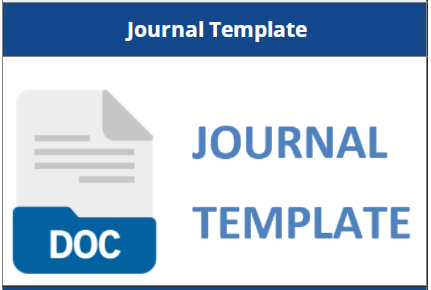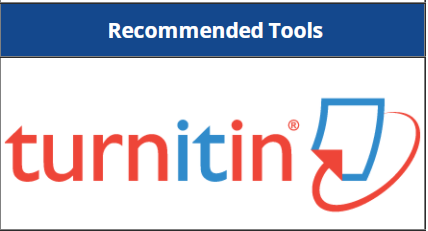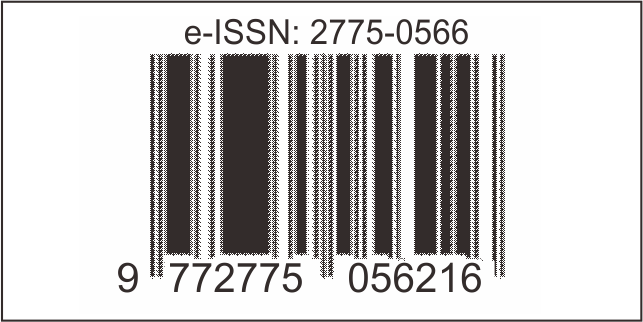KETANGGUHAN WILAYAH PESISIR SELATAN PROVINSI DAERAH ISTIMEWA YOGYAKARTA TERHADAP BAHAYA BENCANA TSUNAMI
Abstract
The southern coastal region of the Special Region of Yogyakarta (DIY) has a high vulnerability to the risk of tsunami. This disaster risk is certainly endangering the people who live in this area. In addition, this risk can also be a factor that hinders development in the DIY’s coastal area. Therefore, in order to reduce the negative impacts, this area must be resilient to a tsunami disaster. This study is an effort to measure the regional resilience against the tsunami risk in 13 sub-districts on the south coast of DIY. The measurement uses a calculation method adapted from the theory of spring elasticity. The finding demonstrates subdistricts in the SRY have low to moderate level of resilience to tsunami disaster.
Downloads
References
[2] Badan Nasional Penanggulangan Bencana (BNPB). (2019a). Indeks Risiko Bencana Indonesia. Jakarta: BNPB.
[3] Badan Nasional Penanggulangan Bencana (BNPB). (2019b). Katalog Desa/Kelurahan Rawan Tsunami: Kelas Bahaya Tinggi dan Sedang. Jakarta: BNPB.
[4] Bahena-Ayala, R., Arreguín-Cortés, F. I., & Cervantes-Jaimes, C. E. (2021). Assessing resilience of cities to hydrometeorological hazards. Tecnología y Ciencias Del Agua, 12(1), 192–260. https://doi.org/10.24850/j-tyca-2021-01-06
[5] Béné, C. (2013, September). Towards a Quantifiable Measure of Resilience. Institute of Development Studies. https://onlinelibrary.wiley.com/doi/pdf/10.1111/j.2040-0209.2013.00434.x
[6] Benson, C., & Clay, E. J. (2004). Understanding the Economic and Financial Impacts of Natural Disasters. Disaster Risk Management series; no. 4. Washington, DC: World Bank. © World Bank. https://openknowledge.worldbank.org/handle/10986/15025 License: CC BY 3.0 IGO.
[7] Buikstra, E., Ross, H., King, C. A., Baker, P. G., Hegney, D., McLachlan, K., & Rogers-Clark, C. (2010). The components of resilience-Perceptions of an Australian rural community. Journal of Community Psychology, 38(8), 975–991. https://doi.org/10.1002/jcop.20409
[8] Cai, H., Lam, N., Zou, L., Qiang, Y., & Li, K. (2016). Assessing Community Resilience to Coastal Hazards in the Lower Mississippi River Basin. Water, 8(2), 46. https://doi.org/10.3390/w8020046
[9] Cutter, S. L., Burton, C. G., & Emrich, C. T. (2010). Disaster Resilience Indicators for Benchmarking Baseline Conditions. Journal of Homeland Security and Emergency Management, 7(1), 1–22. https://doi.org/10.2202/1547-7355.1732
[10] Frankenberg, E., Sikoki, B., Sumantri, C., Suriastini, W., & Thomas, D. (2013). Education, Vulnerability, and Resilience after a Natural Disaster. Ecology and Society, 18(2), 1–23. https://doi.org/10.5751/es-05377-180216
[11] Hallegatte, S., Henriet, F., Patwardhan, A., Narayanan, K., Ghosh, S., Karmakar, S., Patnaik, U., Abhayankar, A., Pohit, S., Corfee-Morlot, J., Herweijer, C., Ranger, N., Bhattacharya, S., Bachu, M., Priya, S., Dhore, K., Rafique, F., Mathur, P. & Naville, N. (2010), "Flood Risks, Climate Change Impacts and Adaptation Benefits in Mumbai: An Initial Assessment of Socio-Economic Consequences of Present and Climate Change Induced Flood Risks and of Possible Adaptation Options", OECD Environment Working Papers, No. 27, OECD Publishing, Paris, https://doi.org/10.1787/5km4hv6wb434-en
[12] Hoffmann, R., & Blecha, D. (2020). Education and Disaster Vulnerability in Southeast Asia: Evidence and Policy Implications. Sustainability, 12(4), 1401. https://doi.org/10.3390/su12041401
[13] Imperiale, A. J., & Vanclay, F. (2016). Experiencing local community resilience in action: Learning from post-disaster communities. Journal of Rural Studies, 47, 204–219. https://doi.org/10.1016/j.jrurstud.2016.08.002
[14] Kongko, W., & Hidayat, R. (2014). Earthquake-Tsunami in South Jogjakarta Indonesia: Potential, Simulation Models, and Related Mitigation Efforts. IOSR Journal of Applied Geology and Geophysics, 2(3), 18–22. https://doi.org/10.9790/0990-0231822
[15] Kusumastuti, R. D., Viverita, Husodo, Z. A., Suardi, L., & Danarsari, D. N. (2014). Developing a resilience index towards natural disasters in Indonesia. International Journal of Disaster Risk Reduction, 10, 327–340. https://doi.org/10.1016/j.ijdrr.2014.10.007
[16] Levy, J. K., & Gopalakrishnan, C. (2005). Promoting Disaster-resilient Communities: The Great Sumatra–Andaman Earthquake of 26 December 2004 and the Resulting Indian Ocean Tsunami. International Journal of Water Resources Development, 21(4), 543–559. https://doi.org/10.1080/07900620500363297
[17] Marfai, M. A., Sunarto, Khakim, N., Fatchurohman, H., Cahyadi, A., Wibowo, Y. A., & Rosaji, F. S. C. (2019). Tsunami hazard mapping and loss estimation using geographic information system in Drini Beach, Gunungkidul Coastal Area, Yogyakarta, Indonesia. E3S Web of Conferences, 76, 03010. https://doi.org/10.1051/e3sconf/20197603010
[18] Morrow, B. 2008. "Community Resilience: A Social Justice Perspective." CARRI Research Report 4. Oak Ridge: Community and Regional Resilience Institute.
[19] National Emergency Management Committee. (2009, Desember). National Strategy for Disaster Resilience: Building Our Nation’s Resilience to Disasters. https://www.preventionweb.net/files/18017_nationalstrategydisasterresilience.pdf
[20] Norris, F. H., Stevens, S. P., Pfefferbaum, B., Wyche, K. F., & Pfefferbaum, R. L. (2008). Community Resilience as a Metaphor, Theory, Set of Capacities, and Strategy for Disaster Readiness. American Journal of Community Psychology, 41(1–2), 127–150. https://doi.org/10.1007/s10464-007-9156-6
[21] Oktari, R. S., Syamsidik, Idroes, R., Sofyan, H., & Munadi, K. (2020). City Resilience towards Coastal Hazards: An Integrated Bottom-Up and Top-Down Assessment. Water, 12(10), 2823. https://doi.org/10.3390/w12102823
[22] Paramesti, C. A. (2011). "Kesiapsiagaan Masyarakat Kawasan Teluk Pelabuhan Ratu terhadap Bencana Gempa Bumi dan Tsunami." Jurnal Perencanaan Wilayah dan Kota 113-128
[23] Parsons, M., Glavac, S., Hastings, P., Marshall, G., McGregor, J., McNeill, J., Morley, P., Reeve, I., & Stayner, R. (2016). Top-down assessment of disaster resilience: A conceptual framework using coping and adaptive capacities. International Journal of Disaster Risk Reduction, 19, 1–11. https://doi.org/10.1016/j.ijdrr.2016.07.005
[24] Prasetya, T., & Imamura, F. (2010). Numerical simulation for the assessment of tsunami scenarios in southern yogyakarta, central java island, indonesia. Bulletin of the International Institute of Seismology and Earthquake Engineering, 44, 121-126.
[25] Pushpalal, D., & Suzuki, A. (2020). A New Methodology for Measuring Tsunami Resilience Using Theory of Springs. Geosciences, 10(11), 469. https://doi.org/10.3390/geosciences10110469
[26] Rifat, S. A. A., & Liu, W. (2020). Measuring Community Disaster Resilience in the Conterminous Coastal United States. ISPRS International Journal of Geo-Information, 9(8), 469. https://doi.org/10.3390/ijgi9080469
[27] Rentschler, J. E. (2013). Why Resilience Matters: The Poverty Impacts of Disasters. Policy Research Working Paper; No. 6699. World Bank, Washington, DC.
[28] Sharma, U., Patwardhan, A., & Patt, A. G. (2013). Education as a Determinant of Response to Cyclone Warnings: Evidence from Coastal Zones in India. Ecology and Society, 18(2), 1–15. https://doi.org/10.5751/es-05439-180218
[29] Syam, A. (2016). "Kelayakan Jalur Evakuasi Tsunami di Kecamatan Padang Utara Kota Padang." Jurnal Kepemimpinan dan Kepengurusan Sekolah 11-15
[30] Tobin, G. A., & Whiteford, L. M. (2002). Community Resilience and Volcano Hazard: The Eruption of Tungurahua and Evacuation of the Faldas in Ecuador. Disasters, 26(1), 28–48. https://doi.org/10.1111/1467-7717.00189
[31] UNISDR. (2009, Mei). UNISDR Terminology on Disaster Risk Reduction. https://www.unisdr.org/files/7817_UNISDRTerminologyEnglish.pdf
[32] UNISDR. (2015, Maret). The Sendai Framework for Disaster Risk Reduction 2015–2030. https://www.preventionweb.net/files/43291_sendaiframeworkfordrren.pdf
[33] Xu, W., Xiang, L., & Proverbs, D. (2020). Assessing Community Resilience to Urban Flooding in Multiple Types of the Transient Population in China. Water, 12(10), 2784. https://doi.org/10.3390/w12102784
[34] Yavuz, C., Kentel, E., & Aral, M. M. (2020). Tsunami risk assessment: economic, environmental and social dimensions. Natural Hazards, 104(2), 1413–1442. https://doi.org/10.1007/s11069-020-04226-y












